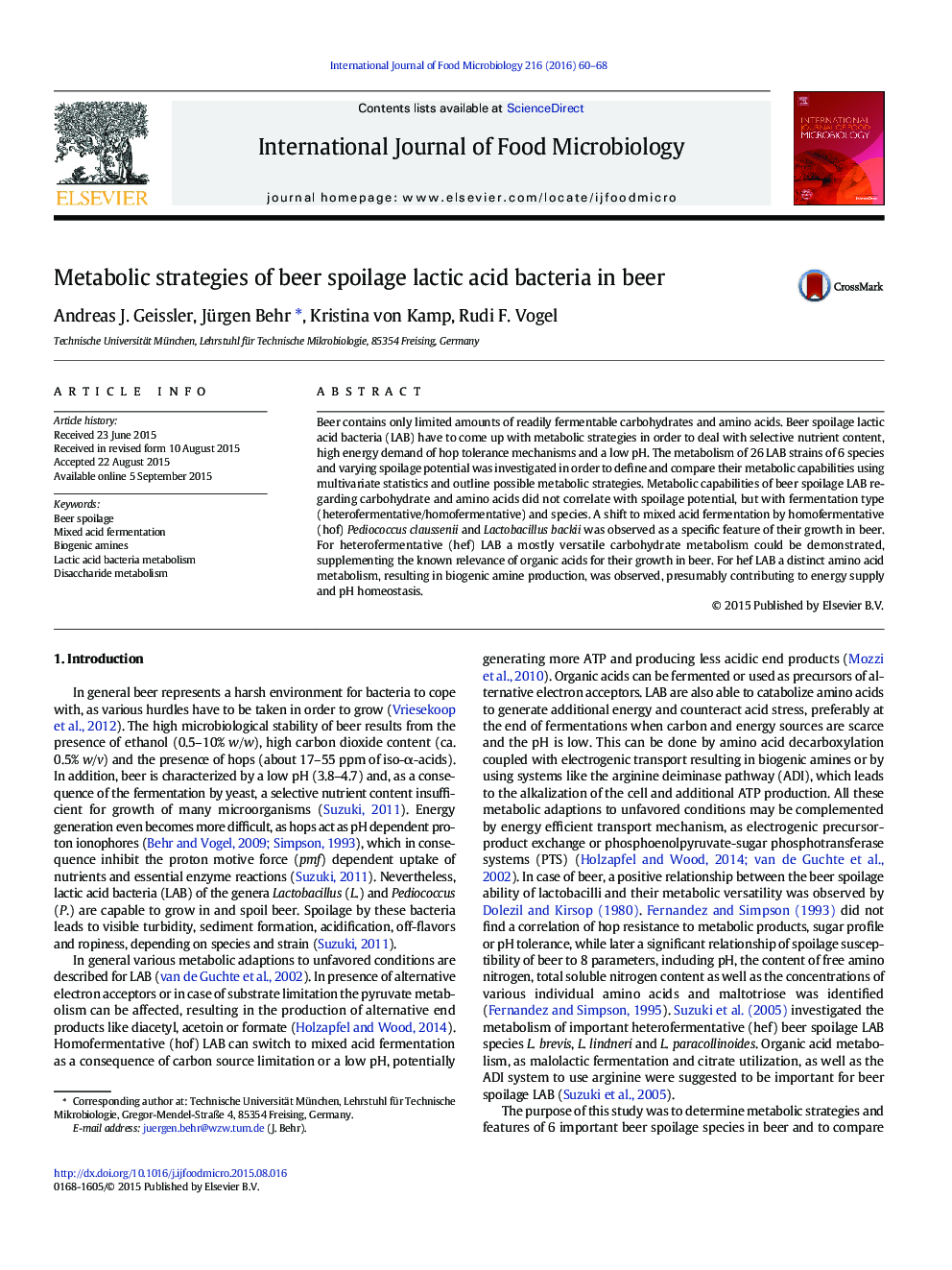| Article ID | Journal | Published Year | Pages | File Type |
|---|---|---|---|---|
| 4366427 | International Journal of Food Microbiology | 2016 | 9 Pages |
•Metabolism of LAB does not correlate to spoilage potential.•Shift to mixed acid fermentation by hof P. claussenii and L. backii in beer•Amino acid metabolism by heterofermentative LAB results in biogenic amines.•Disaccharides as favored sugars for pediococci, L. brevis and L. paracollinoides•Carbohydrate metabolism is also important for heterofermentative LAB in beer.
Beer contains only limited amounts of readily fermentable carbohydrates and amino acids. Beer spoilage lactic acid bacteria (LAB) have to come up with metabolic strategies in order to deal with selective nutrient content, high energy demand of hop tolerance mechanisms and a low pH. The metabolism of 26 LAB strains of 6 species and varying spoilage potential was investigated in order to define and compare their metabolic capabilities using multivariate statistics and outline possible metabolic strategies. Metabolic capabilities of beer spoilage LAB regarding carbohydrate and amino acids did not correlate with spoilage potential, but with fermentation type (heterofermentative/homofermentative) and species. A shift to mixed acid fermentation by homofermentative (hof) Pediococcus claussenii and Lactobacillus backii was observed as a specific feature of their growth in beer. For heterofermentative (hef) LAB a mostly versatile carbohydrate metabolism could be demonstrated, supplementing the known relevance of organic acids for their growth in beer. For hef LAB a distinct amino acid metabolism, resulting in biogenic amine production, was observed, presumably contributing to energy supply and pH homeostasis.
